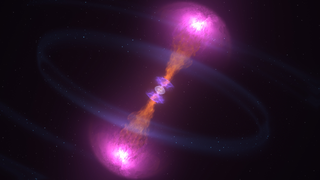Universe
ID: 12949
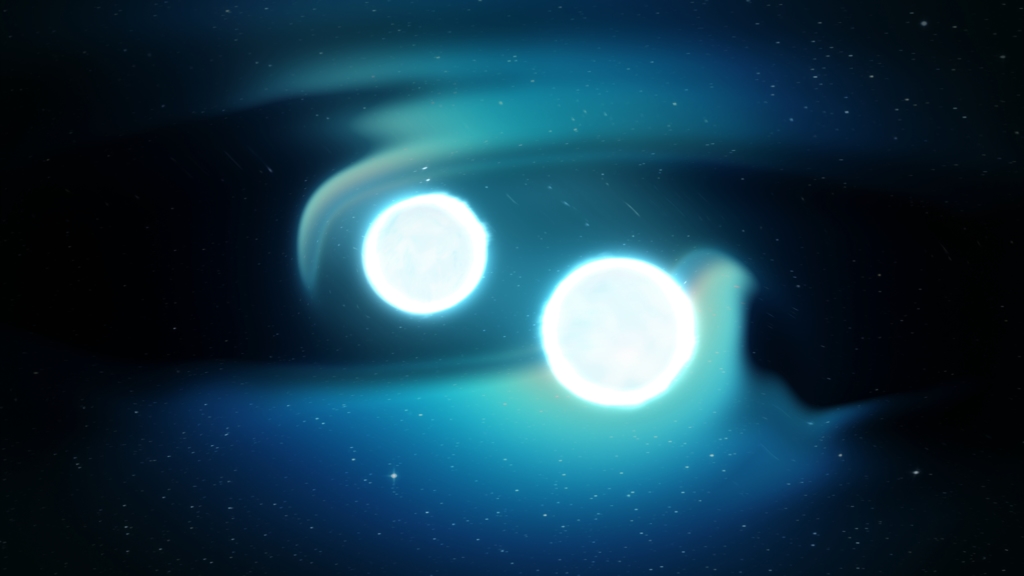
Nearly 130 million light-years away from Earth, two neutron stars merged. These crushed, leftover cores of massive stars orbited around each other hundreds of times a second in a tight swirling dance that produced ripples through space called gravitational waves. Eventually the two neutron stars spun fast enough and close enough to each break apart and then merge together releasing energy in a gamma-ray burst and a flash of light called a kilonova. On Earth detectors and telescopes in space and around the world, including NASA’s Swift, Hubble, Spitzer, and Chandra telescopes, saw the light from the collision in August 2017. Combined with the groundbreaking detection of its gravitational waves by the National Science Foundation's Laser Inferometer Gravitational wave Observatory (LIGO) and NASA's Fermi Gamma Ray Space Telescope, scientists have a comprehensive set of observations that will help them test conclusions about the merging of neutron stars. Watch the video to learn more.
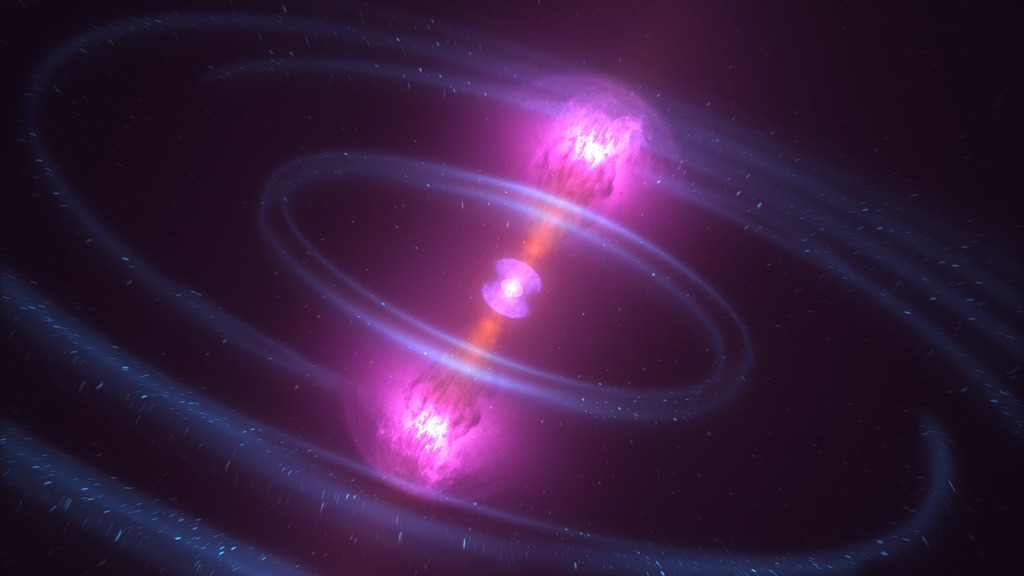
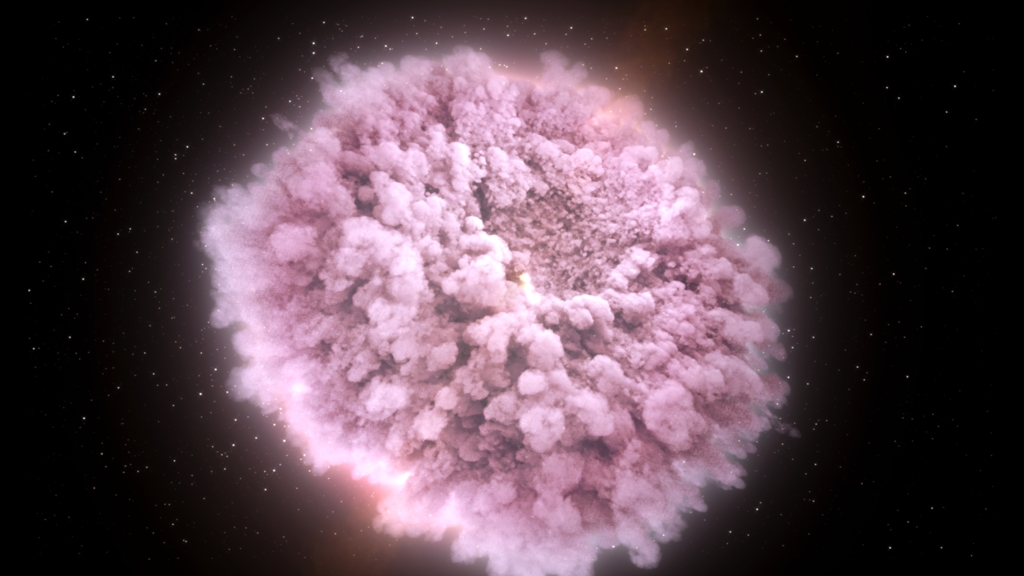
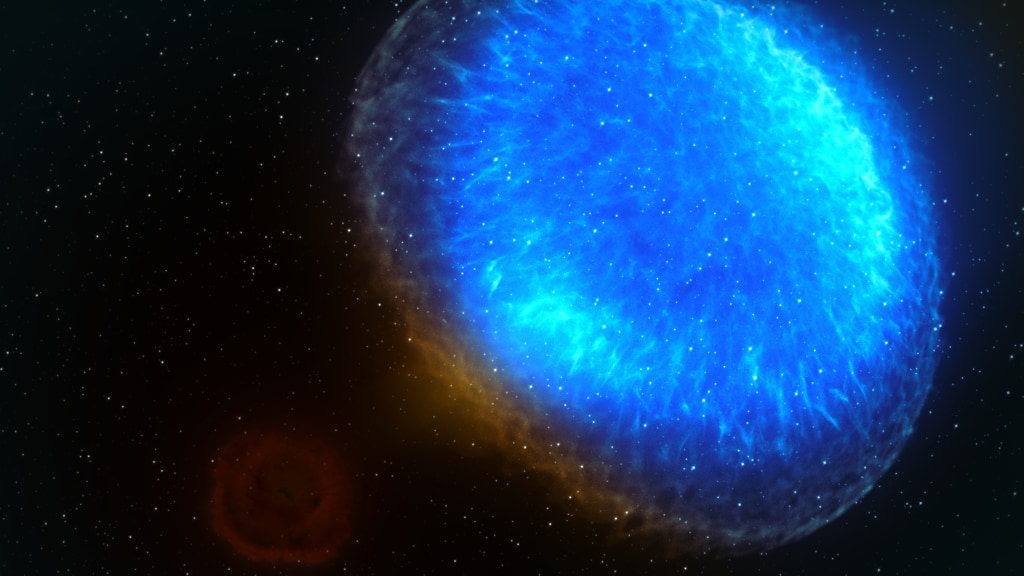
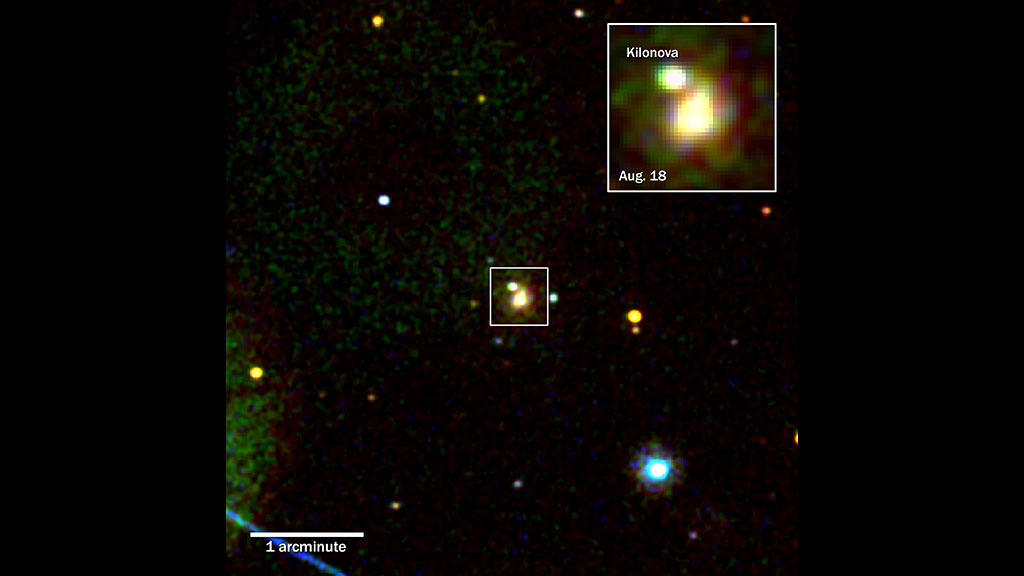
Star Collision





Related Story
For More Information
Story Credits
Lead Visualizer/Animator:
Brian Monroe (USRA)
Visualizer/Animator:
Scott Wiessinger (USRA)
Lead Producer:
Scott Wiessinger (USRA)
Lead Scientists:
Julie McEnery (NASA/GSFC)
Brad Cenko (NASA/GSFC)
Eleonora Troja (University of Maryland College Park)
Lead Writer:
Francis Reddy (University of Maryland College Park)
Writer:
Trey Russell Mason (Experiential Learning Program, UMD)
Brian Monroe (USRA)
Visualizer/Animator:
Scott Wiessinger (USRA)
Lead Producer:
Scott Wiessinger (USRA)
Lead Scientists:
Julie McEnery (NASA/GSFC)
Brad Cenko (NASA/GSFC)
Eleonora Troja (University of Maryland College Park)
Lead Writer:
Francis Reddy (University of Maryland College Park)
Writer:
Trey Russell Mason (Experiential Learning Program, UMD)
Please give credit for this item to:
NASA's Goddard Space Flight Center/CI Lab
Optical telescope image of kilanova is courtesy of NASA/Swift
NASA's Goddard Space Flight Center/CI Lab
Optical telescope image of kilanova is courtesy of NASA/Swift
Short URL to share this page:
https://svs.gsfc.nasa.gov/12949
Keywords:
SVS >> HDTV
SVS >> Hyperwall
SVS >> Astrophysics
SVS >> App
NASA Science >> Universe
https://svs.gsfc.nasa.gov/12949
Keywords:
SVS >> HDTV
SVS >> Hyperwall
SVS >> Astrophysics
SVS >> App
NASA Science >> Universe
